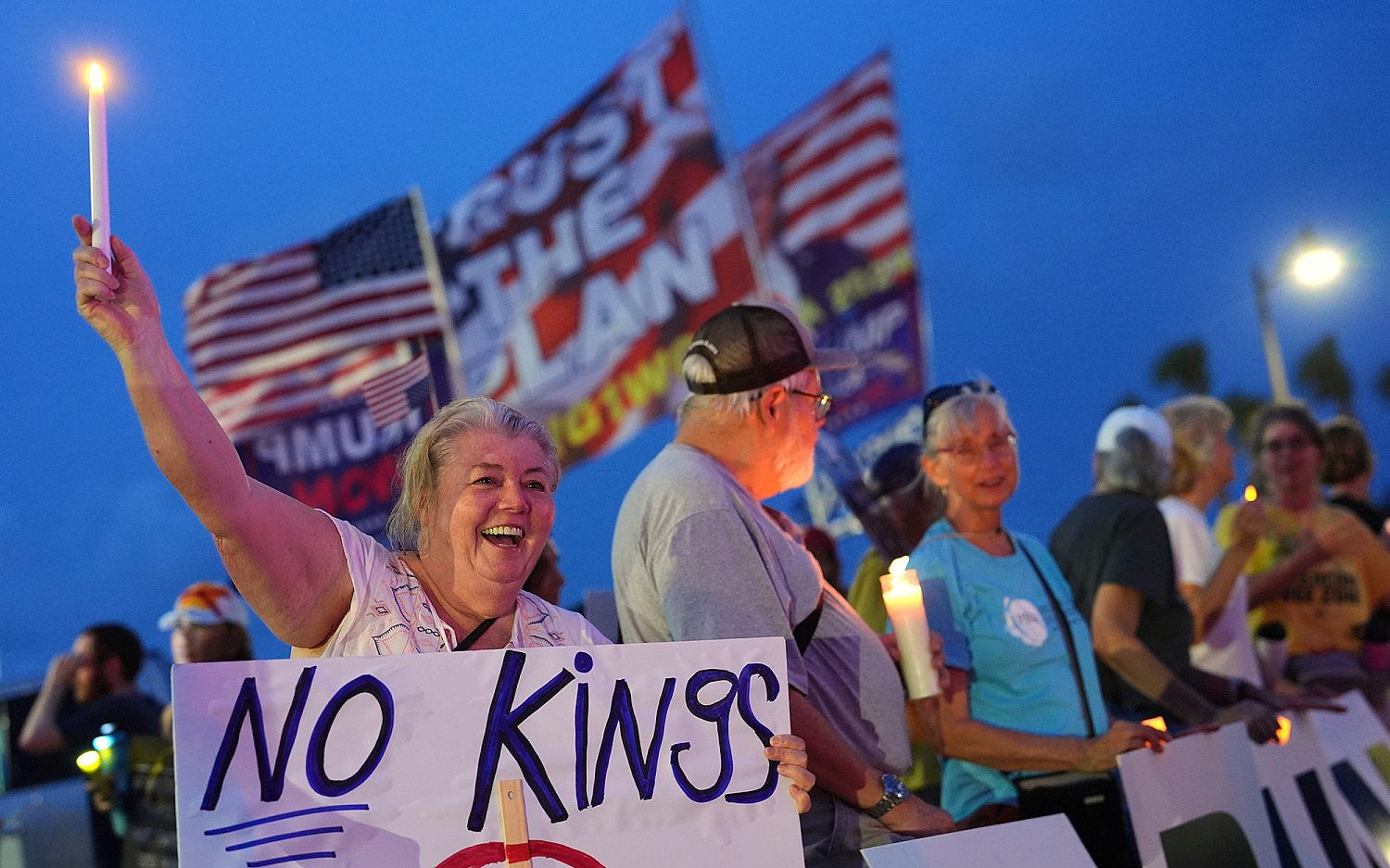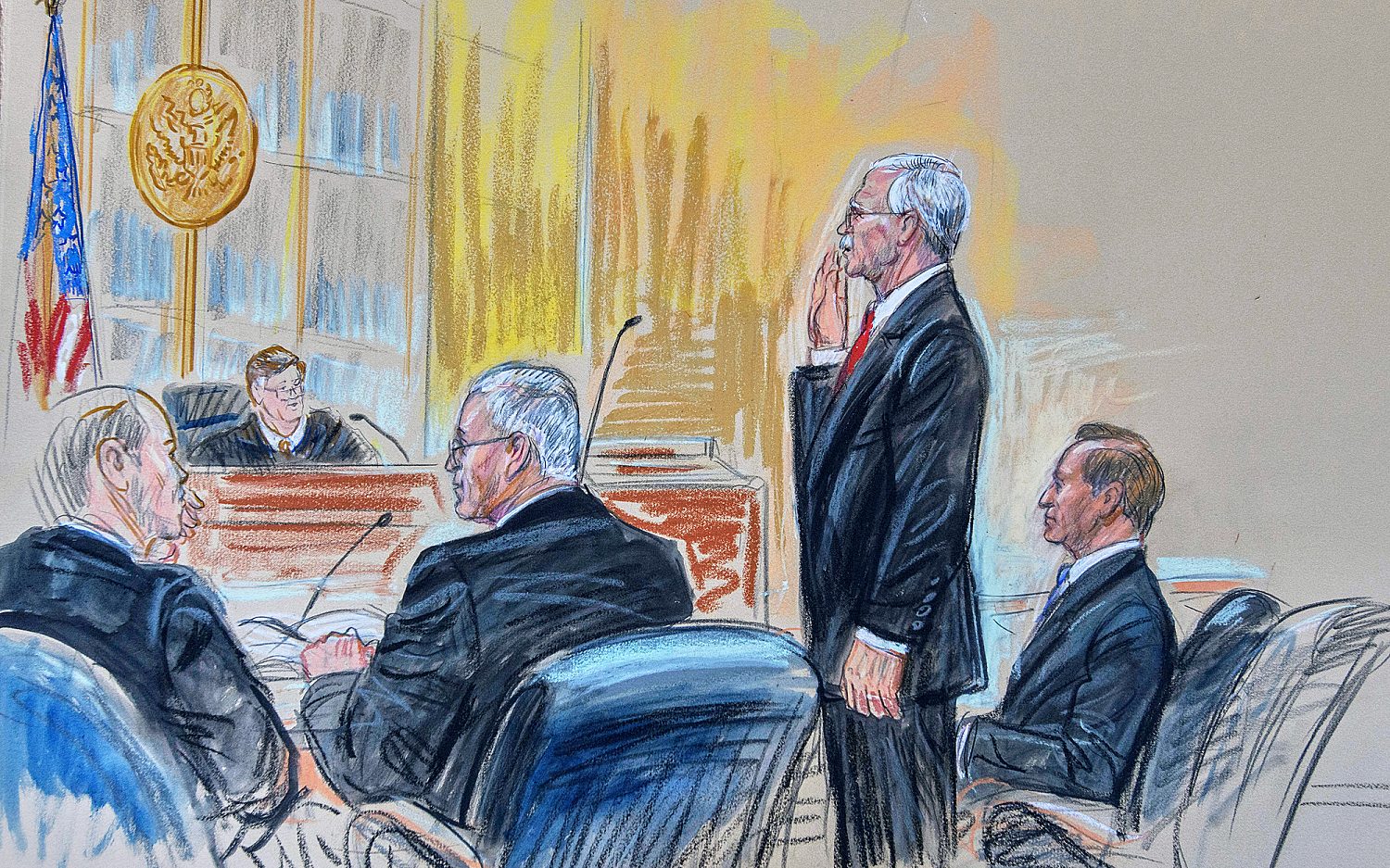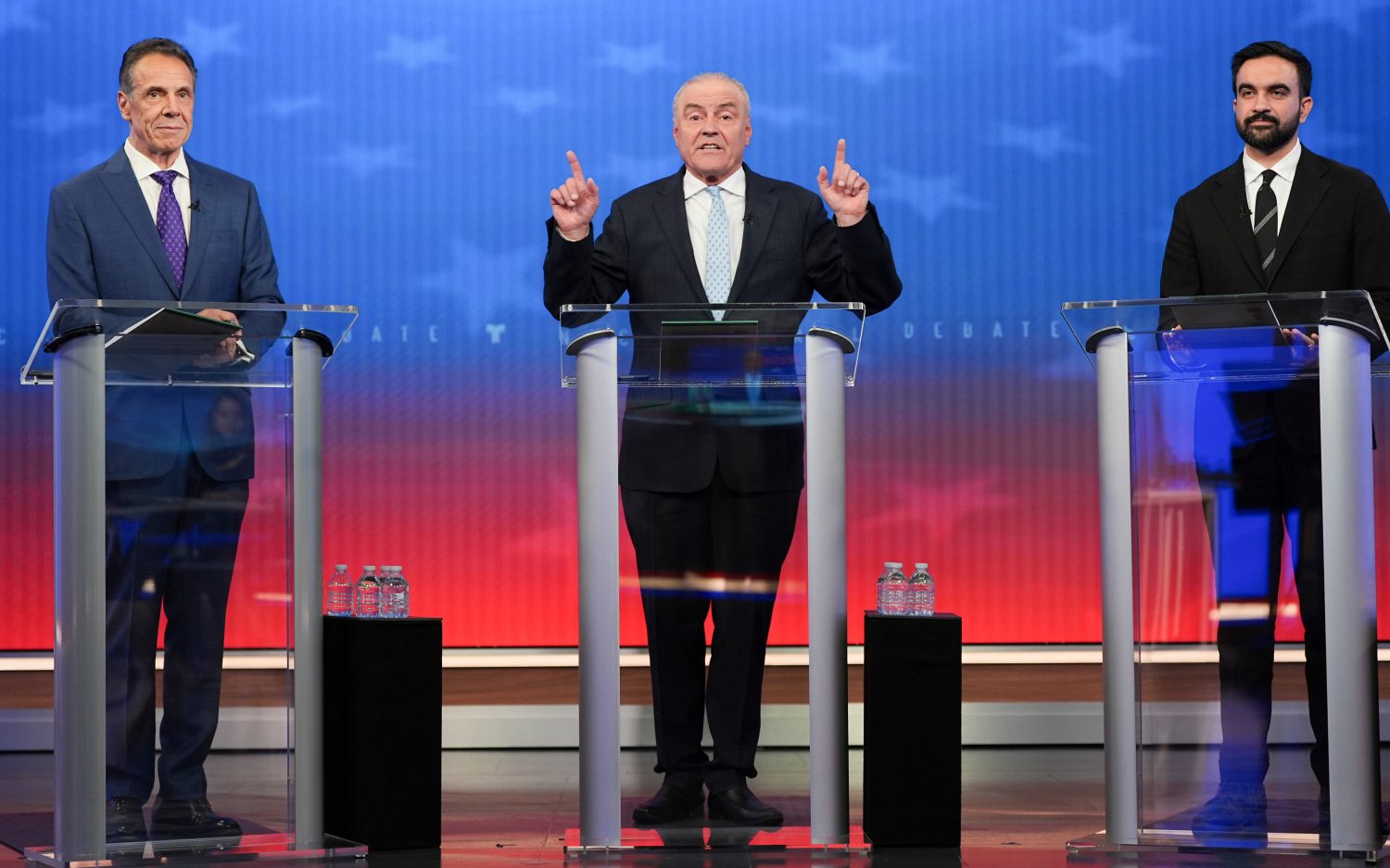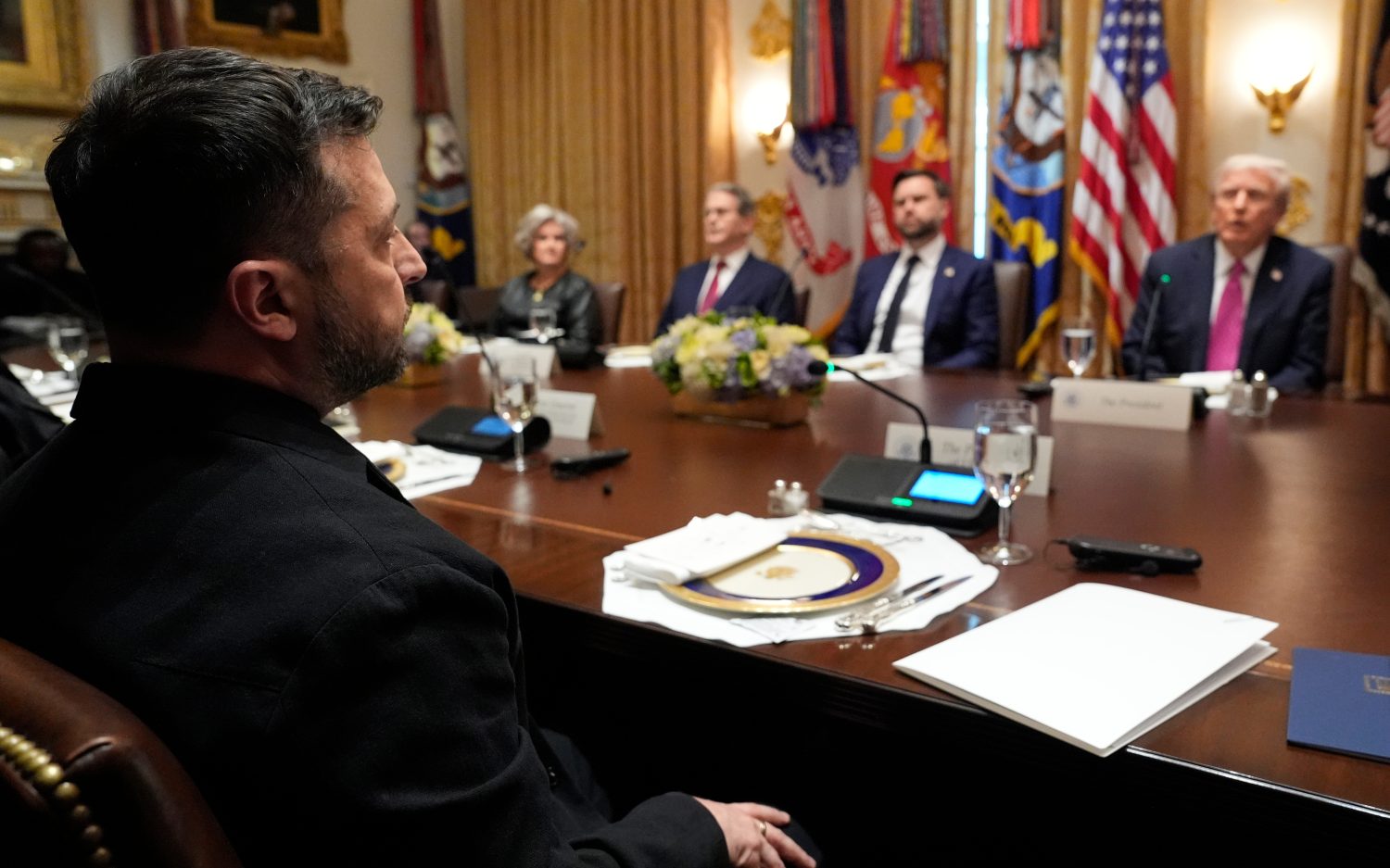Churches unite, call for peace in St. Louis
After the weekend shooting of an unarmed teen, each night has brought violence and rage
UPDATE (6:10 p.m. EDT): The Missouri State Highway Patrol will oversee security in the St. Louis suburb of Ferguson, which has been rocked by violent clashes between officers and protesters in recent nights. Gov. Jay Nixon announced the change this afternoon in response to criticism that the St. Louis County Police Department has been overly confrontational with protesters. Nixon said the change is intended to make sure “that we allow peaceful and appropriate protests, that we use force only when necessary, that we step back a little bit and let some of the energy be felt in this region appropriately.” Highway Patrol Capt. Ronald Johnson grew up in the community and will lead the policing efforts.
OUR EARLIER REPORT (1:56 p.m. EDT): Plumes of smoke, flickering flames of Molotov cocktails, and chaos engulfed the St. Louis suburb of Ferguson on Wednesday night as rioters faced off with armed police four days after an officer shot an unarmed 18-year-old. As the race-fueled riots escalate, the typically scattered church in St. Louis is unifying as it calls for peace and brings hope.
Demonstrations began peacefully on Wednesday afternoon, but when protesters hadn’t dispersed by 5:30 p.m., police sent in armored vehicles, including one topped with an officer manning a long rifle, according to the St. Louis Post-Dispatch. A line of armed police blocked an intersection and ordered the protesters to either leave or face arrest. At 9 p.m., some of the remaining 50 protesters began lobbing Molotov cocktails and other objects at the police, causing officers to respond with smoke bombs and tear gas. Most of the crowd dispersed.
“We've had protesters, like the last few nights, who are unwilling to listen tonight,” said St. Louis County Police Chief Jon Belmar. He praised his officers for their restraint, saying that no protesters or police were injured, except for an officer who sprained his ankle. “To maintain that restraint, it is, frankly, remarkable.”
Michelle Higgins, Worship and Outreach Coordinator at South City Church in St. Louis, said the atmosphere completely changes as day turns to night. During the day, the streets fill with peaceful rallies, prayer, and even worship with police present, yet rarely dressed in riot gear. But in the evening, a militarized police force emerges. Higgins said even though the police are patient and speak politely, “their appearance is so daunting that it creates a tension that does not have to be there.” The night also brings a different type of protester, including frustrated young people from all over the St. Louis area who often ignore community leaders’pleas to keep the protests peaceful.
Riots have erupted since Saturday, when police shot and killed Michael Brown. Police reports claim Brown struggled with the officers, while two eyewitnesses say Brown had his hands in the air when he was shot multiple times. In the following days, rioters looted and burned stores, confronted police in the streets, and demanded the name of the officer responsible for Brown’s death. The police department has refrained from granting their request in the interest of the officer’s safety after receiving death threats against the officer. Early Wednesday morning, police shot and critically wounded a man who pointed a gun at them.
Two reporters, Wesley Lowery of The Washington Post and Ryan Reilly of The Huffington Post, said they were arrested Wednesday night after they didn’t vacate a nearby McDonald’s quickly enough, and were soon released without any charges.
The St. Louis County Police Department, the FBI, and Department of Justice are investigating Brown’s death, though county prosecutors said details of the shooting would not be released anytime soon. Pastor Rodrick Burton, an African-American who leads the New Northside Missionary Baptist Church, located minutes from Ferguson, said it’s disheartening to see young people who are looking for instant results take matters into their own hands. “The quest for justice through the court system takes time. If we shortcut that, African-Americans know it very well, it’s called lynching.” He applauded the police department’s willingness to allow outside investigations about what really happened.
Burton is also discouraged to see how people are injecting inaccurate information and their own narratives into an already tragic case. For one, he said, unlike the claims of many reports, the northern suburb of Ferguson, which is two-thirds black and one-third white, actually has “pretty good race relations,” and he worries how the riots will affect the existing relationships. Higgins agreed that while tensions exist between citizens and the predominantly white police force, on a personal level, many in the mixed neighborhood have worked to tear down walls and improve relations. Business owners of different races frequent each other’s shops, and the city has a growing number of interracial couples. “Ferguson would not be the first place I’d predict to have this incident and this response,” University of Missouri-St. Louis criminology Professor Rick Rosenfeld told The Washington Post.
The incident has united churches in the St. Louis area as congregations of different denominations and races come together to pray for the city. Burton said the church must teach its youth to submit to authorities rather than fall for the mindset that “I don’t need to obey the police because they’ve done something wrong.” At Higgins’ multiethnic church, prayer meetings have attracted both believers and non-believers hoping to find peace amid the turmoil. Churches have also spilled onto the streets of Ferguson as members help clean up the city, choirs sing psalms from the sidewalks, seminary students attend forums, and spoken-word artists speak of their ultimate hope.
“It is not a surprise to me to see churches united,” Higgins said. “This is what we all want, not only to unite during the joyful times, but to behave as one body of Christ when the visible body of Christ must be present on earth. It’s beautiful.”
The Associated Press contributed to this report.
An actual newsletter worth subscribing to instead of just a collection of links. —Adam
Sign up to receive The Sift email newsletter each weekday morning for the latest headlines from WORLD’s breaking news team.





Please wait while we load the latest comments...
Comments
Please register, subscribe, or log in to comment on this article.